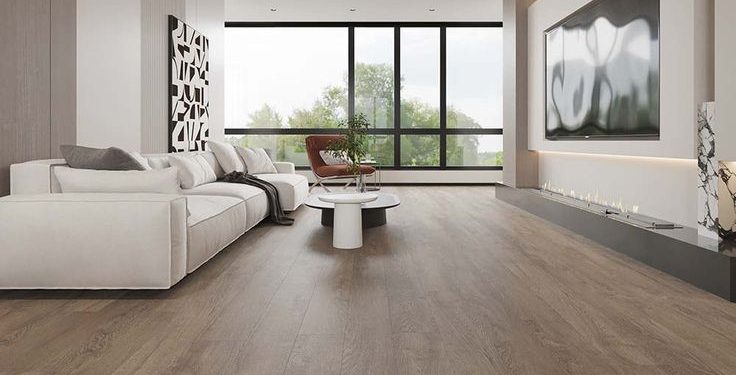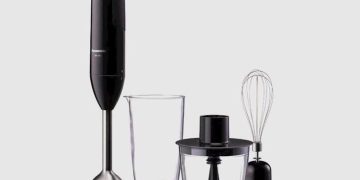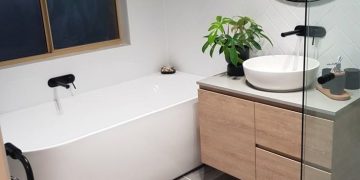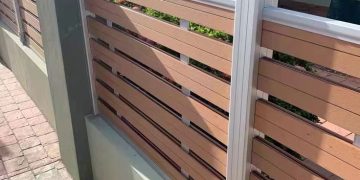The finish on your wood floor is just as important as the wood species itself. It not only dictates the floor’s aesthetic appeal but also its durability, maintenance requirements, and how it interacts with light. With a range of options from high-gloss to ultra-matte and natural oils, choosing the right finish can significantly impact the overall look and feel of your home. Understanding the characteristics of each type is crucial for making a decision that aligns with your lifestyle and design preferences.
This article explores the most popular wood flooring finishes: glossy, matte, and natural, highlighting their pros and cons.
1. Glossy Finishes: Classic Shine and Elegance
Glossy finishes, typically achieved with polyurethane or lacquer, offer a high-shine, reflective surface that enhances the wood’s natural color and grain. They were once the standard for a luxurious and formal look.
- Pros:
- Elegant and Formal Look: A high-gloss finish creates a sophisticated and polished appearance, often associated with traditional or opulent interiors.
- Brightens Spaces: The reflective surface can make a room feel brighter and more expansive by bouncing light around.
- Enhances Wood Grain: The sheen can make the wood’s natural grain pop, highlighting its intricate patterns.
- Durable: Modern polyurethane finishes are quite durable and offer good protection against spills and everyday wear.
- Cons:
- Shows Imperfections: Glossy surfaces are highly reflective, meaning they tend to highlight dust, dirt, scratches, and imperfections more readily.
- Slippery: Can be more slippery than less reflective finishes, especially when wet.
- More Maintenance: Requires more frequent cleaning to maintain its pristine, streak-free appearance.
- Can Look Dated: In some modern design contexts, a very high-gloss finish can appear less contemporary compared to matte or natural options.
2. Matte Finishes: Modern Sophistication and Practicality
Matte finishes have surged in popularity, offering a low-sheen, non-reflective surface that provides a more natural and contemporary aesthetic. They are often achieved with specific polyurethane formulations or natural oil finishes.
- Pros:
- Natural and Modern Look: Creates a soft, understated appearance that closely resembles raw or untreated wood, aligning well with minimalist, Scandinavian, and contemporary designs.
- Hides Imperfections: The low reflectivity makes dust, dirt, minor scratches, and scuffs far less noticeable, requiring less frequent deep cleaning.
- Less Slippery: Offers better traction than glossy finishes, making it a safer option for active households.
- Low Maintenance Appearance: While still requiring regular cleaning, matte floors don’t demand the constant buffing to hide smudges that glossy floors do.
- Cons:
- Less “Pop”: Some might find that matte finishes don’t make the wood grain “pop” as much as glossy finishes.
- Stain Removal (for some types): While generally durable, some matte finishes (especially certain natural oils) might require more specific care for stubborn stains compared to lacquers.
3. Natural Oil / Hardwax Oil Finishes: Organic Beauty and Repairability
Natural oil and hardwax oil finishes penetrate the wood fibers, protecting them from within rather than forming a surface layer. They leave the wood with a very natural, almost raw, look and feel.
- Pros:
- Authentic Feel: Provides the most natural look and feel, enhancing the wood’s inherent beauty and texture.
- Breathable: Allows the wood to breathe, which can be beneficial for its longevity.
- Easy Spot Repair: Unlike lacquers, individual damaged spots or scratches can often be spot-repaired without needing to refinish the entire floor, making maintenance easier in the long run.
- Eco-Friendly Options: Many natural oil finishes are made from plant-based oils and waxes, with low or zero VOC content, aligning with eco-friendly homes.
- Cons:
- Requires More Frequent Maintenance: Typically needs re-oiling or re-waxing every few years (or more often in high-traffic areas) to maintain protection and appearance.
- Less Water Resistance (Initially): While they protect the wood, they don’t create a completely impermeable barrier like some lacquers, so spills need to be wiped immediately.
- Can Be Prone to Stains: Certain liquids might penetrate more easily if not wiped quickly, potentially leading to stains.
Conclusion
The choice of wood flooring finish is a crucial decision that impacts both the aesthetics and practicality of your floors. Glossy finishes offer a classic, elegant shine but demand meticulous cleaning. Matte finishes provide a modern, understated look that is more forgiving of daily wear. Natural oil and hardwax oil finishes deliver unparalleled organic beauty and easy spot repair but require more regular reapplication. By weighing these characteristics against your lifestyle, desired aesthetic, and willingness to maintain, you can select the perfect finish to enhance your wood floors for years to come.








